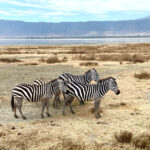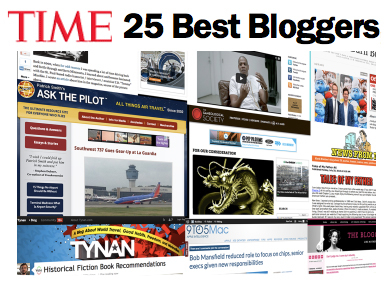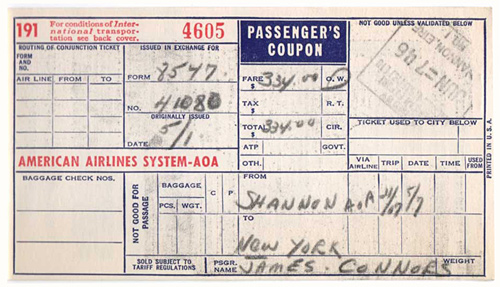About The Author
ALL CONTENTS ON THIS SITE WERE CONCEIVED AND WRITTEN BY PATRICK SMITH
Patrick Smith is an airline pilot, air travel blogger and author. His Ask the Pilot column, from which portions of this website have been adapted, ran in the online magazine Salon.com from 2002 until 2012.
Patrick has appeared on over 400 radio and television outlets, including CNN, PBS, the BBC and National Public Radio. He is regularly cited in print publications worldwide, and was voted one of the “25 Best Bloggers” by TIME magazine. His op-eds and articles have been published in The New York Times, the Boston Globe, and several other newspapers.
For media queries, see here.

Patrick took his first flying lesson at age fourteen. His first job with an airline came in 1990, when he was hired as a copilot on 15-passenger turboprops earning $850 a month. He has since flown cargo and passenger jets on both domestic and intercontinental routes. He currently flies the Boeing 757 and 767 aircraft.
The author’s self-published punk rock fanzines and poetry journals of the 1980s and 1990s are considered among the more curious works of literature ever produced by a native of Revere, Massachusetts.
Patrick travels extensively in his spare time and has visited more than ninety countries. He lives near Boston.
The thoughts and opinions herein are the author’s own, and do not necessarily reflect those of any other person or entity.
AN INTRODUCTION FROM THE AUTHOR:
MORE THAN EVER, air travel is a focus of curiosity, intrigue, anxiety and anger. In these pages I do my best to inform and entertain. I provide answers for the curious, reassurance for the anxious, and unexpected facts for the deceived.
I begin with a simple premise: everything you think you know about flying is wrong. That’s an exaggeration, I hope, but not an outrageous starting point in light of what I’m up against. Commercial aviation is a breeding ground of bad information, and the extent to which different myths, fallacies, wives’ tales and conspiracy theories have become embedded in the prevailing wisdom is startling. Even the savviest frequent flyers are prone to misconstruing much of what actually goes on.
Which isn’t surprising. Air travel is a complicated, inconvenient, and often scary affair for millions of people, while at the same time cloaked in secrecy. Its mysteries are concealed behind a wall of specialized jargon, corporate reticence and an irresponsible media. Airlines, it hardly needs saying, aren’t the most forthcoming of entities, while journalists and broadcasters like to keep it simple and sensational. It’s hard knowing who to trust or what to believe.
Importantly, however, this is not a website about flying, per se. I am not writing for gearheads or those with a predisposed interest in planes; my readers don’t want to see an aerospace engineer’s schematic of a jet engine, and a technical discussion about cockpit instruments or aircraft hydraulics is guaranteed to be tedious and uninteresting — especially to me. Sure, we’re all curious how fast a plane goes, how high it flies, how many statistical bullet points can be made of its wires and plumbing. But as both author and pilot, my infatuation with flight goes beyond the airplane itself, encompassing the fuller, richer drama of getting from here to there – the “theater” of air travel, as I like to call it.
For most of us who grow up to become airline pilots, flying isn’t just something we fell into after college. Ask any pilot where his love of aviation comes from, and the answer almost always goes back to early childhood — to some ineffable, hard-wired affinity that seemingly came from nowhere. Mine certainly did. My earliest crayon drawings were of planes, and I took flying lessons before I could drive. Just the same, I have never met another pilot whose formative obsessions were quite like mine. I have limited fascination with the sky or with the seat-of-the-pants thrills of flight itself. As a youngster, the sight of a Piper Cub meant nothing to me. Five minutes at an air show watching the Blue Angels do barrel rolls and I was bored to tears. What enthralled me instead were the workings of the airlines: the planes they flew and the places they went.
In the fifth grade I could recognize a Boeing 727-100 from a 727-200 by the shape of the intake of its center engine (oval, not round). I could spend hours cloistered in my bedroom or at the dining room table, poring over the route maps and timetables of Pan Am, Aeroflot, Lufthansa and British Airways, memorizing the names of the foreign capitals they flew to. Next time you’re wedged in economy, flip to the route maps in the back of the inflight magazine. I could spend hours studying those three-panel foldouts and their crazy nests of city-pairs, immersed in a kind of junior pilot porno. I knew the logos and liveries of all the prominent airlines (and many of the non-prominent ones) and could replicate them freehand with a set of colored pencils.
Thus I learned geography as thoroughly as I learned aviation. For most pilots, the world beneath those lines of the route map remains a permanent abstraction; countries and cultures of little or no interest beyond the airport fence or the perimeter of the layover hotel. For others, as happened to me, there’s a point when those places become meaningful. One feels an excitement not merely by the act of moving through the air, but by the idea of going somewhere. You’re not just flying, you’re traveling. The full, beautiful integration of flight and travel; travel and flight. Are they not the same thing? To me they are. One can inspire the other, sure, but I never would have traipsed off to so many countries in my free time — from Cambodia to Botswana; Sri Lanka to Brunei — if I hadn’t fallen in love with aviation first.
If ever this connection struck me in a moment of clarity, it was a night several years ago during a vacation I took to Mali, in West Africa. Though I could write for pages about the wonders and strangeness of West Africa, one of the trip’s most vivid moments took place at the airport in Bamako, moments after our plane touched down from Paris. Two-hundred of us descended the drive-up stairs into a sinister midnight murk. The air was misty and smelled of woodsmoke. Dim yellow beams from military-style spotlights criss-crossed the tarmac. We were paraded solemnly around the exterior of the aircraft, moving aft in a wide semicircle toward the arrivals lounge. There was something ceremonial and ritualistic about it. I remember walking beneath the soaring, blue and white tail of Air France, the plane’s auxiliary turbine screaming into the darkness. It was all so exciting and, to use a politically incorrect word, exotic. And that incredible airplane is what brought us there. In a matter of hours, no less – a voyage that once would have taken weeks by ship and desert caravan.
The disconnect between air travel and culture seems to me wholly unnatural, yet we’ve seen virtually a clean break. Nobody gives a damn anymore how you get there. – the means coldly separated from the ends. For most people, whether bound for Kansas or Kathmandu, the airplane is a necessary evil, incidental to the journey but no longer part of it. An old girlfriend of mine, an artist who would have no trouble appreciating the play of light in a 17th-century painting by Vermeer, found my opinions utterly perplexing. Like most people, she analogized airplanes merely as tools. The sky was the canvas, she believed; the jetliner as discardable as the painter’s brush. I disagree, for as a brush’s stroke represents the moment of artistic inspiration, what is travel without the journey?
We’ve come to view flying as yet another impressive but ultimately uninspiring technological realm. This is the realization, perhaps, of a fully evolved technology; progress, one way or the other, mandates the extraordinary become the ordinary. But don’t we lose valuable perspective when we begin to equate the commonplace, more or less by definition, with the tedious? Aren’t we forfeiting something important when we sneer indifferently at the sight of a jet airplane, at the sheer impressiveness of being able to throw down a few hundred dollars, hop into a jetliner and travel halfway around the world at nearly the speed of sound?
It’s a tough sell, I know, in this age of long lines, grinding delays, overbooked planes and inconsolable babies. To be clear, I am not extolling the virtues of tiny seats or the culinary subtlety of half-ounce bags of snack mix. The indignities and hassles of modern air travel require little elaboration and are duly noted. But believe it or not, there is still plenty about flying for the traveler to savor and appreciate.
I’m hesitant to say that we’ve developed a sense of entitlement, but it’s something like that. Our technological triumphs aside, consider also the industry’s remarkable safety record, and the fact that fares have remained startlingly cheap even with tremendous surges in the price of fuel Sure, years ago passengers could enjoy a five-course meal served by a tuxedoed steward before retiring to a private sleeping berth. My first airplane ride was in 1974: I remember my father in a suit and tie, and double helpings of fresh cheesecake on a 90-minute domestic flight. But the thing was, getting on a plane was expensive. This will be lost on many people today, young people especially, but once upon a time college kids didn’t zip home for a few days over Christmas. You didn’t grab a last minute seat for $99 and pop over to Las Vegas — or to Mallorca or Phuket — for a long weekend. Flying was a luxury, and people indulged sporadically if at all.
In 1939 aboard Pan Am’s Dixie Clipper, it cost $750 to fly round-trip between New York and France. That’s equal to well over $6,000 today. In 1970 it cost the equivalent of $2,700 to fly from New York to Hawaii. On my bookshelf at home is an old American Airlines ticket receipt. It’s a flea market find and it dates from 1946. That year, somebody named James Connors paid $334 to fly each direction between Ireland and New York. That’s equivalent to $3,690 today — one-way!
Things changed. Planes, for one, became more efficient. Aircraft like the 707 and 747 made long-haul travel affordable to the masses. Then the effects of Deregulation kicked in, changing forever the way airlines competed. Fares plummeted and passengers poured in. Yes, flying became more aggravating and less comfortable. It also became affordable for almost everybody.
I have learned never to underestimate the contempt people have for airlines and the degree to which they hate to fly. While much of this contempt is well deserved, neither is all of it fair. The passenger in 2012 can, in a backpack and flip-flops, traverse the oceans for the equivalent of a few pennies per mile, in near-perfect safety and with an 85 percent chance of arriving on time. Is that really such an awful way to travel?
Meanwhile if you’re that insatiably eager to revisit those luxurious indulgences of aviation’s golden years, well you can do that too, by purchasing a first or business class ticket — for less than what it cost 50 years ago.
CLICK HERE TO RETURN TO THE MAIN PAGE
Visit the Blog Archive Back to the Ask the Pilot Home Page Back to Top!







